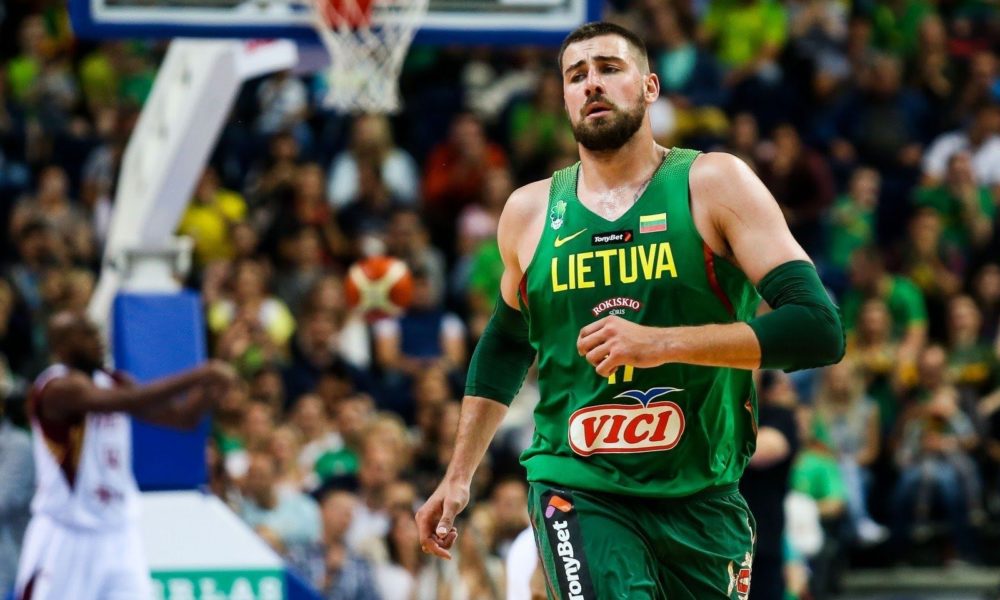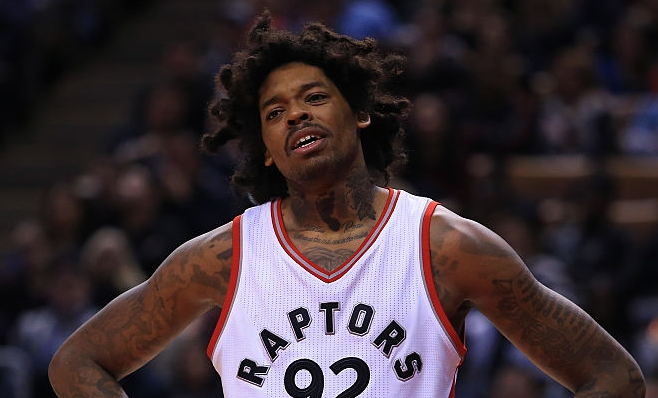Photo credit: Trung Ho / TrungHo.ca
Canada 99, U.S. Virgin Islands 69 | Box Score
Canada wanted to leave nothing to the imagination or chance with a pair of rare home games in the new FIBA World Cup qualification format. They did exactly that, closing out a two-game home set with an emphatic 99-69 victory over the U.S. Virgin Islands to finish the first round of qualification at 5-1 and punch their way through to the second round. As it was Friday, Canada took a bit of time to find their groove and let the home crowd begin to fuel them, eventually finding the extra gear a deep and talented player pool affords them over a lot of their first-round competition.
It took Canada a minute to get going, and the Virgin Islands opened the scoring to get into an early comfort zone on the offensive end, hitting four jumpers in a row in the opening minutes. Dillon Brooks eventually ended the mini-drought, and Canada had their offensive footing under them. R.J. Barrett made a couple of nice takes early on, Dwight Powell filled in space well with savvy cuts and dives (and his third impossible finish on bad lob passes in this quadrant of games), and despite USVI’s hot shooting, Brooks pulled Canada back even before the halfway mark of the quarter with a steal and finish the other way. Like with Friday’s game, Canada’s focus was clearly on pushing off of any misses or turnovers, and that pressure helped bend the visitors’ defense. Barrett had another nice moment finishing a Powell dime, Cory Joseph canned a smooth three, and as the Virgin Islands cooled off from the floor (and the free-throw line, where they couldn’t punish Andrew Nembhard for fouling a 3-point shooter), Canada gained just a bit of separation. Were it not for a bit of a casual approach for stretches on offense and a cold 2-of-8 stretch from long-range, Canada should have been up more than the four points they were.
As he did in the fourth quarter Friday, Phil Scrubb set the tone for the second with a quick bucket, and Brady Heslip followed closely behind with a triple. Some nice defensive pressure let them attack a scrambled defense, and Scrubb hit a three to continue his takeover of the quarter in his old city. Bennett had a nice stretch, too, sending USVI to a timeout down 10 with a three as the trailer in transition. Out of the timeout, Joseph unleashed a filthy spin move that looked like it would be the highlight of the half, but Barrett had other plans, picking up a steal and feeding Kelly Olynyk with a ridiculous behind-the-back pass in transition for a dunk. It was terrific. It also kept USVI at arm’s length, helping take Canada into the break ahead 46-34, with nine different players scoring and all 12 seeing the floor.
.@KellyOlynyk hammers it down after a behind the back pass by @RjBarrett6 👀 #ThisIsMyHouse@CanBball 🇨🇦 🆚 Virgin Islands 🇻🇮
📺 https://t.co/5VEs9rX5EF
📝 https://t.co/LgS4HMqIyk
📱 https://t.co/6BBBf6oObD pic.twitter.com/WYtWCFA4rj— FIBA Basketball World Cup 2023 🏆 (@FIBAWC) July 2, 2018
The doors blew off from there, with Canada opening the third on a 9-0 run in under two minutes to take a commanding 20-point lead. Similar to the last meeting between these sides and even Friday’s game against the Dominican Republic, Canada’s talent edge simply began winning out, the expanded sample of possessions highlighting the quality gap as time went along. That’s fairly normal for FIBA qualifier-level action and hasn’t always been a staple of Canada’s performance, so it was at least nice to see them keep a foot on the gas in a game where the point differential very much matters. Brooks tried to punctuate the emerging blow-out with an accidental And-1 style layup and then a dunk attempt that required a hard foul, and Joseph and Olynyk continued the strong play that’s come to be expected from them in these events. Canada was up 24 as they began to go to the bench, turning the reins back over to Scrubb and Khem Birch to keep up their solid afternoons. Nembhard closed things out with a nice transition bucket off the glass, pushing the lead out to 27 entering the fourth.
The fourth was fairly rote from there, although Joseph’s continued dominance and the stellar play of Powell were worth noting. The teens also had some good moments together. By the end, the lead had swelled to 30, with four players scoring in double-figures (Olynyk led with 14) and all 12 players getting on the board for at least three points. They shot 55 percent as a team, even hit 9-of-27 on threes by the end, had a huge rebounding edge, and for a second game in a row had an assist number well into the 20s. It was thorough.
Like Friday, this was exactly the performance you were looking for from Canada. The offense was tremendous, their pace of play was great running off of turnovers and rebounds, and outside of some hot shooting out of the gate for USVI, Canada’s defense came as advertised. They can only beat the teams in front of them, and with the exception of the first meeting with Dominican Republic much earlier in the year, they’ve done so resoundingly, leaving little doubt that they’re one of the favorites to qualify for the 2019 World Cup as the next round gets under way in September.
Notes
- The victory gives Canada the top spot as Group D comes to a close. It doesn’t matter all that much other than to determine the schedule for the next round of qualification – every team will play three home and three away games against the teams moving on from Group B – but it’s nice to finish at 5-1 and have the confidence of winning the group.
- Records also carry over, meaning Canada will begin Group F in first place, for whatever that’s worth. At 5-1 with a +153 point differential, they’ll enter Group F with the tie-breaker over Dominican Republic and the best point differential in the group. Dominican Republic, Brazil, and Venezuela could all enter at 5-1 if they win their respective games late today, but Canada’s point differential will be significantly higher to begin the round.
- Canada will play Brazil, Venezuela, and one of Chile or Colombia (likely Chile) in the next round of qualifiers, playing each team once at home and once on the road. The location of home games is still to be determined, and Group B still has games to play later today to determine who Canada will play and when.
- Those qualifying windows come Sept. 13-17 (NBA players should be available, college players won’t be), Nov. 29-Dec. 3 (likely no NBA or NCAA players), and Feb. 21-25 (again, no NBA or NCAA players). Canada managed just fine (3-1) in the in-season qualifying quadrants last time around without NBA and NCAA (and EuroLeague) players, and while the difficulty will be ratcheted up here a bit, the depth of the program should have them in pretty good shape.
- If Canada can take both September games, they’d be 7-1 with a great shot of having their qualifying mostly sorted out. Even failing that, Canada only has to place in the top three in this six-team group (or have the best record of either fourth-placed team in the two groups), and they’ve put themselves in a really good position to qualify if they continue playing to form.



